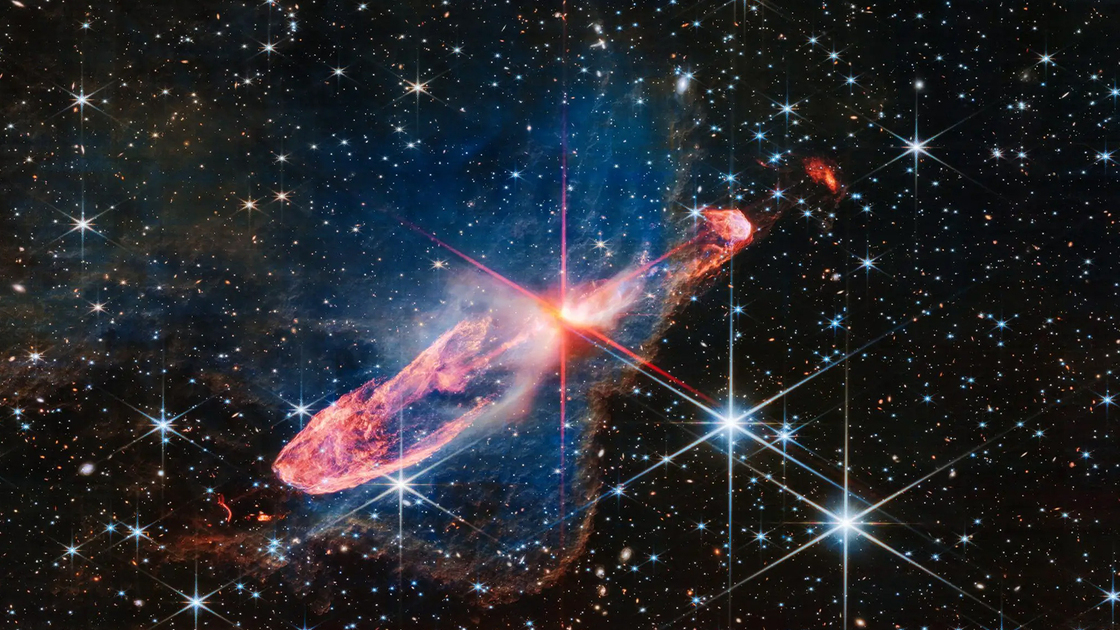The James Webb Space Telescope has been orbiting a million miles from the Earth, giving us stunning images of the universe. To onlookers, these pictures are breathtaking. But to professional astronomers, they are extremely surprising. What Webb is seeing is not at all according to scientist’s predictions and even contradicts their theories. The telescope has provided understanding about some of the earliest galaxies of the universe. These astonishingly sharp pictures from the James Webb have shattered astronomers’ ideas about the “big bang theory.”
The latest images from space show just how much more of the universe the James Webb has revealed compared to the Hubble Telescope. Imagine holding a grain of sand up to the sky, and zooming in on an area of the sky that small. That’s what they did with the James Webb, and they saw thousands of various galaxies in that tiny area. Our minds cannot fathom just how many galaxies are out there.
In August of 2022, Eric Lerner, Chief Scientist of LPP Fusion, published a very controversial article called, “The Big Bang Didn’t Happen,” in which he explained these flaws. Simply put, the problem he points out is that there are just too many galaxies.
Too many galaxies? How is that a problem? Isn’t that beautiful? For us, it just reinforces God’s mind-staggering power and his vast creation.
But for scientists who believe the “big bang theory,” this is a big problem. So, what exactly does this theory say? This may be a little confusing, but the “big bang” really cannot be explained logically: First there was nothing, but there wasn’t really nothing; there was matter and anti-matter—and they were fighting. Somehow matter beat anti-matter, and there we have it: Matter existed. Now, this matter was very hot and dense because it just beat anti-matter, so it decided to expand. You can kind of view this like an explosion or bang—a big bang.
Now this expansion means that the universe just keeps getting bigger. But it also means that as the 13.8 billion years of the history of our universe continues, galaxies and stars started spreading further apart. Scientists expected there to be fewer and fewer galaxies as the James Webb viewed further into the universe. This means that after a certain point, there should barely be any galaxies, because the universe hasn’t expanded that far yet.
But the James Webb has shown the exact opposite: They saw a lot of galaxies very far away. Some of these galaxies were surprisingly small, others were more than 50 times bigger than the scientists’ models suggested.
Besides having a larger mirror, the James Webb was specifically created to detect more infrared than the Hubble—so we can observe galaxies far, far away. These distant galaxies have redshifted so much that they are only detectable by the James Webb. A higher redshift means the galaxy is further away. In his article, Lerner points out that new images show there are at least one hundred thousand times as many galaxies that have a redshift more than 10 as big bang theorists predicted.
GN-z11 is the furthest galaxy that Hubble detected. Galaxies with such a high redshift are part of the “young universe.” They are so far away that scientists thought there wouldn’t be many of them. But the James Webb shattered that idea with images of countless, previously unknown galaxies even older and farther away. The farthest galaxy discovered so far is HD1 with a redshift of more than 13. According to the big bang theory, there should not be that many galaxies so far away, but there are!
Wren Suess is an astronomer at the University of California, and she compared Hubble images with images from the James Webb. She found that a lot of galaxies are actually much older than previously believed. The James Webb is just at the beginning of a planned 20 years of work or more, and astronomers have already had to change their theories.
Allison Kirkpatrick is an astronomer at the University of Kansas. She said, “Right now I find myself lying awake at three in the morning, wondering if everything I’ve ever done is wrong.” She also said, “With the resolution of James Webb, we are able to see that galaxies have disks way earlier than we thought they did.” This is a problem that contradicts scientist’s previous theories about the universe. “We’re going to have to figure that out.”
When Eric Lerner’s article disproving the big bang theory came out, thousands of scientists immediately criticized him and labeled him as “stupid and unfit” for his job, yet they are unable to fit these new findings into the big bang theory.
The James Webb imagery brings to mind Psalm 19:1: ‘The heavens declare the glory of God; and the firmament sheweth his handywork.” We can all be thankful that the launch of the James Webb was successful because it gives us such beautiful and detailed images of the universe. God likely had a hand in ensuring the James Webb Telescope was a success because it exposes the flaws in Satan’s big bang theory and shows the expanse of God’s marvelous creation.
